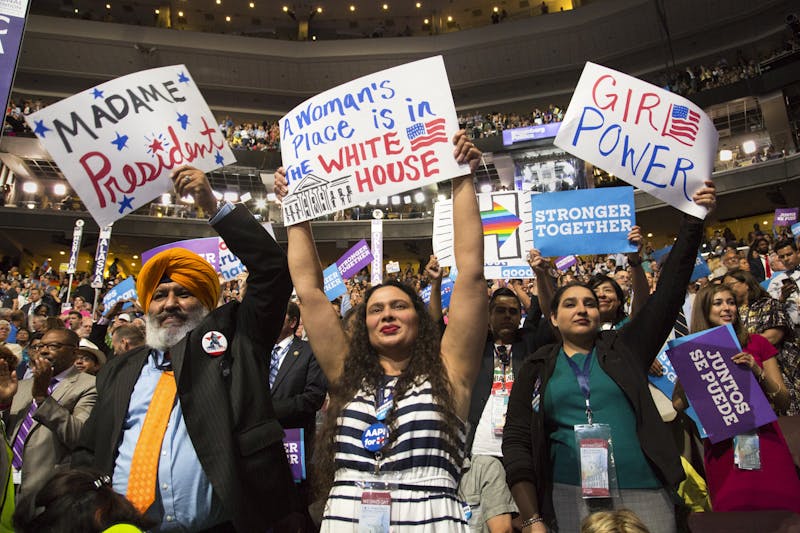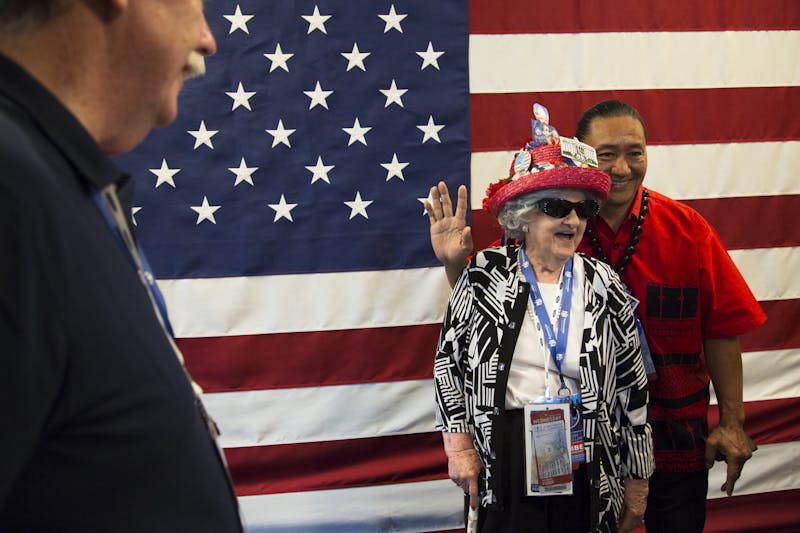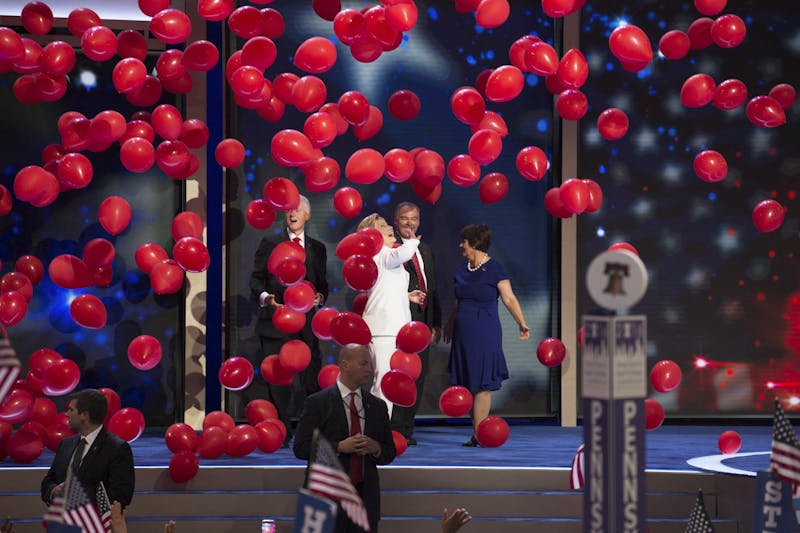The last convention Magnum photographer Susan Meiselas covered was the nomination of Jimmy Carter in 1976 at Madison Square Garden. “My mission there was to find women in the convention hall,” she said. At the time there were only 19 women in Congress, none of whom were in the Senate. The keynote address was by Texas Congresswoman Barbara Jordan, the first African-American woman ever elected to the Texas Senate and the third ever elected to Congress. “I feel that notwithstanding the past that my presence here is one additional bit of evidence that the American Dream need not forever be deferred,” Jordan said.

The world Jordan described in 1976 still resonates 40 years later: “Are we to be one people bound together by common spirit, sharing in a common endeavor; or will we become a divided nation?” After the Democrats watched the Republican convention fracture over its divisive presidential nominee, they started their own with a measure of discord that would take the DNC a full four days to overcome. “There were 1,900 Bernie delegates at their first convention and they didn’t know the rules. Some haven’t played by the rules all along,” Meiselas said. “Many were here to be expressive and pressure the convention on unresolved issues.”

“There was full vocality on the first day into the second day, and after that, vocal disruption gave way to a visual presence,” she added. Sanders supporters scribbled out signs and taped over their mouths. “I heard there was a walkout of delegates after Bernie tried to pull people together with his keynote address. ... I also heard most of them returned as delegates the next day.”

At the RNC, Meiselas was on assignment for the New Republic to photograph the black delegates who supported Trump. It was unclear at the time how many were on the floor, but Fusion would later tally up the numbers: There were 18 black delegates at the RNC and 1,182 at the DNC. “You couldn’t make a photograph without capturing a diversity of people in one frame,” Meiselas said. “It was a dramatic difference.”


“The convention is an incredibly difficult place for someone to work if you’re trying to capture a dynamic interaction. You are often restrained to be in a fixed position or platform which gives you only a single point of reference.” Like the RNC, the DNC only gives small publications a short window of time to work the floor. “The floor pass is an hourly event. It’s random, you have no idea where you will be when your time is up. You could be in the middle of an important speech or reaction and have to miss it.”

“The hall was riveted during Obama’s speech. I could only hear one person shout out ‘We love you!’ Everyone around was feeling a sense of a loss. This was his last big hurrah, his last opportunity to speak directly to the nation.”

On the final night, some Hillary holdouts wore neon yellow T-shirts that said “Enough is Enough.” During the speeches, they turned on their iPhones and lights sprinkled the crowd as Hillary spoke.

The target of the convention’s messaging was clear to Meiselas. “It wasn’t just about smart politics, it brought together passionate and diverse sectors that needed to mobilize.” People wearing Bernie buttons began carrying Hillary signs, and by the final day it was clear the delegates were ready to start their campaign. “I kept thinking, what are these delegates taking home in their hearts? Now they have to go out and make it happen.”

